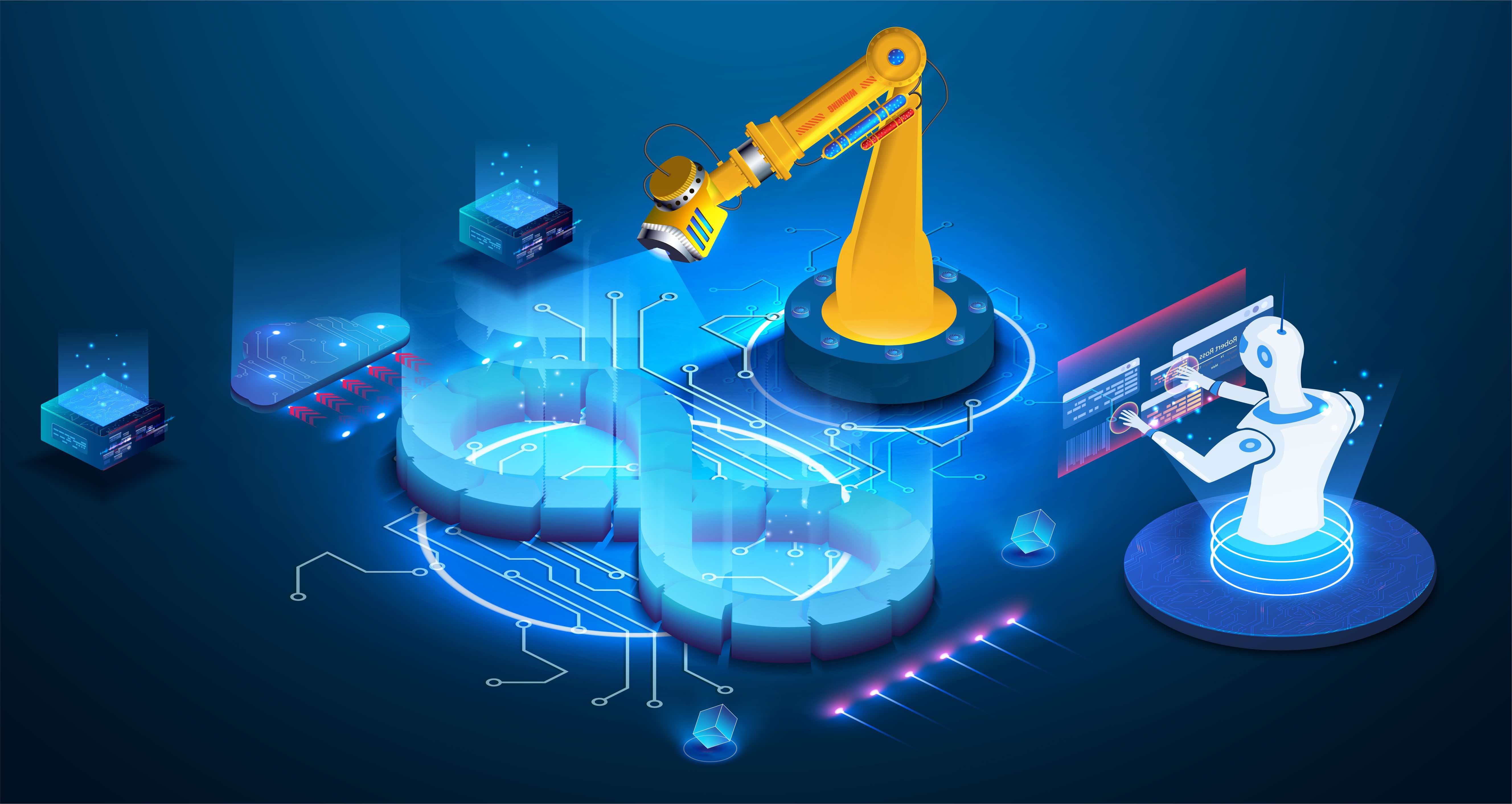In today's fast-paced digital content landscape, the need for adaptable and efficient content management systems (CMSs) has never been greater. Composable CMSs have emerged as a solution to this demand, offering a flexible and modular approach to content management that empowers organizations to create, deliver, and optimize digital experiences with ease. This article explores the top 5 composable CMSs, providing a detailed overview of each platform, its key features, benefits, drawbacks, and ideal use cases. By the end of this article, you'll have a clear understanding of which composable CMS aligns best with your specific content management needs.
Why Composable CMS?
Composable CMSs have gained prominence in recent years due to their ability to adapt to the evolving needs of digital content management. Unlike traditional monolithic CMSs, which often come with limitations and rigid structures, composable CMSs offer a more modular and flexible approach. They allow organizations to compose and customize their digital experiences by assembling various components and services.
The importance of composable CMSs lies in their agility and scalability. In a world where content delivery spans across websites, mobile apps, voice assistants, and more, a CMS that can seamlessly integrate with various platforms and adapt to changing requirements is crucial. Composable CMSs empower content creators, developers, and marketers to work collaboratively, resulting in more efficient content production and better user experiences.
To choose the right composable CMS for your needs, it's essential to evaluate their features, benefits, drawbacks, and ideal use cases. In this article, we'll provide an in-depth analysis of five prominent composable CMSs: CrafterCMS, Contentful, Contentstack, Kontent.ai and Strapi, helping you make an informed decision for your digital content management strategy.
The Top Five Composable CMSs (in 2024)
1. CrafterCMS
CrafterCMS is a modern, open-source composable content management system known for its flexibility, scalability, and rich set of features. It's designed to meet the needs of both developers and content creators, offering a seamless experience in managing digital content.
Strengths
- User-Friendly Interface: The platform provides a highly intuitive interface, Crafter Studio, which is beneficial for non-technical users involved in content management and editing. It supports WYSIWYG in-context editing, drag and drop experience building, and multi-channel previews.
- Git-based Versioning: CrafterCMS uses Git, a powerful version control system, for content versioning. This feature allows for sophisticated content tracking, rollback, and branching capabilities. A Git-based content repository also facilitates smoother team collaboration through DevContentOps processes, as multiple contributors can work on different parts of content simultaneously.
- Hybrid Headless CMS Capabilities: CrafterCMS supports both headless and templated CMS development architectures. This dual approach allows users to manage and deliver content in various formats across different channels. Developers can use any frontend technology they prefer, offering flexibility for creating unique digital experiences. This means not only Javascript frontends like React, Vue, and Angular via REST and GraphQL APIs, but also HTML templating APIs and technologies such as Bootstrap and Freemarker.
- High Scalability and Performance: Built to handle high-traffic websites and applications, CrafterCMS is highly scalable and can manage growing content needs effectively. As a decoupled platform with content authoring separate from serverless content delivery, the platform is optimized for performance, ensuring quick content loading and a smooth user experience.
- Extensibility and Customization: Users can extend the functionality of CrafterCMS through its sophisticated plugin framework and server-side custom scripting (in Groovy or Javascript), enhancing its capabilities to meet specific requirements. Also as an open source platform, backend customization and contributions to its feature set is easily accomplished.
Potential Drawbacks
- Learning Curve: For developers new to Git-based headless CMS platforms, there may be an initial learning curve to effectively utilize all of CrafterCMS's features.
- Resource Intensive: Being a robust enterprise-grade platform, CrafterCMS can be resource-intensive, requiring adequate server capabilities for both the content authoring and content delivery systems.
- Dependency on Development Skills: To fully leverage CrafterCMS, especially for custom developments or integrations, a certain level of technical skill is necessary.
CrafterCMS stands out for its strong composable CMS capabilities, unique support for DevContentOps processes, robust content versioning with Git, and flexibility in content management and delivery. It’s well-suited for businesses looking for a scalable, secure high-performance CMS with a modern composable approach.
2. Contentful
Contentful, founded in 2013, has quickly risen to prominence as a leading composable CMS. Its core philosophy revolves around an API-first approach, enabling developers to access content through APIs and integrate it seamlessly into various applications.
Strengths
- Flexibility and Scalability: Contentful shines with its highly flexible architecture. It allows users to build their own content structures and integrate with a variety of platforms and devices. This scalability is perfect for businesses that anticipate growth or changes in their content strategy.
- User-Friendly Interface: Despite its robust capabilities, Contentful maintains an intuitive and easy-to-navigate interface. This makes it accessible for users who aren't deeply tech-savvy, enabling a wider range of team members to contribute to content management.
- Integration Capabilities: One of Contentful's standout features is its ability to seamlessly integrate with a myriad of other tools and systems. This makes it a versatile choice for businesses already using other digital tools.
- Effective Content Delivery: Contentful utilizes a Content Delivery Network (CDN) which ensures fast and reliable access to content globally. This is crucial for businesses aiming for a strong online presence across different regions.
- Robust API-first Approach: Being API-driven, Contentful offers excellent opportunities for custom development, allowing businesses to tailor the CMS to their specific needs.
Potential Drawbacks
- Learning Curve: For users new to headless CMS or those used to traditional CMS platforms, there might be a learning curve in understanding how to best utilize Contentful’s features.
- Dependency on Developer Skills: To fully leverage its customizability and integrations, businesses might need access to developer resources, which could be a limitation for smaller teams or those with limited technical expertise.
- Content Preview Limitations: Some users have noted limitations in the content preview functionality, which can impact the workflow for content creators and editors who rely heavily on this feature.
Contentful, as a composable CMS, offers impressive flexibility, integration capabilities, and user-friendly experiences, making it a strong contender for businesses looking to scale and customize their digital content strategy.
3. Contentstack
Contentstack is a modern composable CMS, designed to provide content creators and developers with a more flexible, scalable, and efficient way to manage and deliver content across various digital channels.
Strengths
- High Customizability: Contentstack's composable nature allows for great flexibility in content management. Users can tailor their content architecture to meet specific business needs, making it ideal for diverse content strategies.
- User-Friendly Interface: Contentstack is known for its intuitive user interface. This ease of use is a big plus for teams that may not have extensive technical expertise, enabling more efficient content management and collaboration.
- Robust Integration Options: Contentstack excels in its ability to integrate with a wide range of third-party applications and services. This feature is particularly beneficial for businesses that utilize a variety of digital tools and want a seamless integration experience.
- API-First Design: Being an API-first CMS, Contentstack offers excellent opportunities for customization and ensures seamless content delivery across different platforms and devices.
- Strong Support and Community: Contentstack has a reputation for providing excellent customer support. Additionally, its growing community and wealth of resources are valuable for users at all levels.
Potential Drawbacks
- Cost Factor: One of the primary drawbacks of Contentstack is its pricing. The platform can be on the expensive side, especially for small businesses or startups looking for a cost-effective solution.
- Complexity for Beginners: While user-friendly, the platform's wide array of features and customizability options can be overwhelming for beginners or those used to more straightforward CMS platforms.
- Developer Dependence: To fully exploit its capabilities, especially in terms of integrations and custom developments, having access to developer resources is crucial. This can be a barrier for smaller teams with limited technical expertise.
- Performance in High Traffic Situations: Some users have reported challenges with Contentstack in handling extremely high traffic, which might be a consideration for large-scale enterprises.
Contentstack offers a highly customizable, user-friendly, and integration-rich environment, making it a strong choice for businesses looking to tailor their digital content strategy.
4. Kontent.ai
Kontent.ai, formerly known as Kentico Kontent, is a modern Cloud-based Composable CMS known for its headless architecture.
Strengths
- Flexibility in Content Delivery: Kontent.ai's headless nature allows for seamless content distribution across various channels - websites, apps, IoT devices, and more. This flexibility is a boon for businesses targeting multiple platforms.
- Frontend Freedom: Developers can use their preferred technologies for the frontend, such as React, Vue.js, or Angular, ensuring a tailor-made digital experience.
- Structured Content Approach: Kontent.ai promotes a structured content model, making it easier to reuse and repurpose content across different mediums.
- Team Collaboration Tools: Features like content commenting and suggestions enhance team collaboration, Meanwhile, customizable workflows help in streamlining content production and approval processes.
- Scalability and Performance: Being cloud-native, Kontent.ai offers high scalability and reliability. The platform's architecture ensures fast content delivery, enhancing user experience.
Potential Drawbacks
- Steep Learning Curve: The headless concept and API-driven approach might be overwhelming for those new to such systems. Optimal use of Kontent.ai often demands a certain level of technical knowledge, particularly for custom integrations and frontend development.
- Dependence on Integrations: Unlike traditional CMS platforms that offer a wide array of built-in features, Kontent.ai relies more on integrations for extended functionalities.
- Third-Party Integrations: Users may need to integrate with other services for complete solutions, which can add complexity and potential points of failure.
Kontent.ai offers a modern, flexible approach to content management and delivery, especially suited for enterprises and teams looking to distribute content across multiple platforms and channels.
5. Strapi
Strapi is an open-source composable CMS that has gained popularity for its flexibility and community-driven development. Launched in 2013, Strapi offers organizations complete control over their content management.
Strengths
- Flexibility and Customizability: Strapi is highly adaptable. It allows users to define their content structure easily, making it a great choice for those with specific requirements not met by traditional, out-of-the-box CMS solutions.
- Headless Architecture: By being headless, Strapi offers freedom in how and where you present your content. It can be used with various front-end frameworks (like React, Vue.js, Angular) or platforms, making it ideal for multichannel content distribution.
- API-First Approach: Strapi is designed with an API-first philosophy, ensuring seamless integration with other systems and technologies. This is especially beneficial for businesses looking to create a connected and cohesive digital ecosystem.
- Open-Source and Community-Driven: As an open-source platform, Strapi benefits from community contributions, leading to continuous improvements and updates. This also means there are no licensing fees.
- Self-Hosting: You have complete control over your data and infrastructure as Strapi allows for self-hosting. This is crucial for businesses concerned with data security and privacy.
Potential Drawbacks
- Requires Technical Expertise: Setting up and customizing Strapi can require a good amount of technical knowledge. It might not be the best choice for those without development skills or resources.
- Hosting and Maintenance: Being self-hosted, the responsibility of maintaining and securing the server falls on you. This can add an extra layer of complexity and cost.
- Limited Built-in Features: Unlike all-in-one CMS platforms, Strapi comes with fewer out-of-the-box features. Users might need to develop custom functionalities or integrate third-party services.
- Performance Optimization: While Strapi is efficient, the performance largely depends on how it’s set up. Users need to be mindful of optimizing queries and server performance.
Strapi offers a highly flexible and customizable CMS experience, ideal for those seeking a headless, API-driven solution. However, it requires a certain level of technical know-how and resources for setup, maintenance, and optimization.
Summary of Top Composable CMS Platforms
In the ever-evolving landscape of content management, choosing the right CMS is a critical decision. Each of the top 5 composable CMSs—CrafterCMS, Contentful, Contentstack, Kontent.ai, and Strapi — offers unique strengths and caters to different needs. As you navigate the digital content landscape, consider your organization's specific needs, technical expertise, and project requirements. By carefully evaluating these composable CMSs, you can make an informed choice that aligns with your content management strategy and sets you up for success in the digital era.

 Sarah Miller
Sarah Miller




